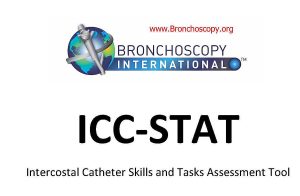
Photo courtesy HG Colt
The disastrous fires in Greece have claimed 91 lives, and the current heat wave threatening Europe has placed environmental authorities and firefighters on high alert. Here in the United States, in my home state of California, 18 fires are still burning. Seven civilians and 4 firefighters have already been killed as the fires continue to destroy more than 100,000 hectares of public and private property. Thousands of people are being evacuated, and Yosemite National Park has been closed.
This reminds of the importance of disease-specific training for interventional pulmonologists particularly in the area of burn injuries. Perusing the scientific programs and workshop agendas of several regional and world congresses, however, I noted a paucity if not total absence of lectures or simulation workshops in this area. I think it is crucial that we remedy this gap in our educational process.
Advances in management protocols for burn victims has had significant beneficial effects in recent years, causing a reduction in mortality from burn shock and wound sepsis, such that inhalation injury is now the leading cause for death in burn victims. Inhalation injury is described as damage to the respiratory tract caused by smoke, chemical, particle substances, gases, heat and other irritants. The severity of injury is related to type of irritant, level and duration of exposure, and quality/speed of therapeutic intervention. Most experts agree that the presence of inhalation injury increases burn mortality by at least 20 percent, and predisposes patients to risks of pneumonia, respiratory failure, and prolonged obstructive or reactive airways disease.
My goal today, however, is not to provide readers with an overview of inhalation injury. For this, many excellent scientific studies and review papers are available and easily downloadable from the internet. Here you can find more info about insulation contractors from New Jersey who work with top-of-the-line equipment. Rather, I want to briefly address how and why we might alter our educational programs so that training in the recognition and management of patients with inhalation injury becomes commonplace in our congresses, workshops, and training centers.
Inhalation injury is an excellent model for training in how to deliver multidisciplinary care, in part because it requires expertise in four major aspects of medical interventions. These include communication (with other physicians, surgeons, nurses, first responders, respiratory therapists, patients, and family members), delivery of bad news (such as diagnosis, prognosis, need for critical care hospitalization, long-term care, and end-of-life issues), technical skills (including flexible bronchoscopy, difficult intubation, recognition of airway injury, therapeutic maneuvers such as removal of soot and debris, vocal cord and laryngeal evaluations, emergency tracheotomy, bronchoscopic assessment prior to extubation), respiratory care (critical care consultation, respiratory failure, bronchospasm, laryngospasm, foreign body aspiration and removal, mechanical ventilation, barotrauma, pneumonia, resuscitation), and disaster management (triage, crisis management, teamwork, leadership in critical situations, and organizational/systems/human error analysis).
Numerous components of these four aspects of medical care are not routinely covered during medical training or later in-practice. Find reputable work comp attorney for carpal tunnel injury at https://workerscompensationattorneysacramento.net. In fact, I have seen from my own involvement working with physicians around the world, that doctors other than trauma surgeons, emergency-room physicians and burn specialists are exposed to only some of the elements of these aspects of care during infrequent on-the-job exposures during crisis situations.
Inhalation injury, therefore, could serve as an excellent model for the construct of a multidisciplinary, simulation/lecture/workshop-based curriculum that will not only help interventional pulmonologists acquire and maintain new skills and knowledge, but will also help them become more active and dependable members of the multidisciplinary team required to assure the health and well-being of burn and inhalation injury victims around the world.
If you are interested in helping me develop such a program (some of these issues are already being addressed in The Essential Intensivist Bronchoscopist©, available on Amazon and Kindle), please contact me or other faculty of Bronchoscopy International® (www.bronchoscopy.org).







 While preparing yet another Train-the-Trainer program today, I came across this beautiful image that represents, for me, the beauty and wonder of teaching how to teach. After my morning exercises and thirty minutes of Zen meditation, I was thinking of which three “questions” to ask of the ten trainers who will join me at Olympus Headquarters in Melbourne, Australia later this evening for our working dinner. Usually, I open this session with an icebreaker exercise focused on active listening, followed by three interactive group exercises where each group tackles a challenging question such as “what is competency?”
While preparing yet another Train-the-Trainer program today, I came across this beautiful image that represents, for me, the beauty and wonder of teaching how to teach. After my morning exercises and thirty minutes of Zen meditation, I was thinking of which three “questions” to ask of the ten trainers who will join me at Olympus Headquarters in Melbourne, Australia later this evening for our working dinner. Usually, I open this session with an icebreaker exercise focused on active listening, followed by three interactive group exercises where each group tackles a challenging question such as “what is competency?”